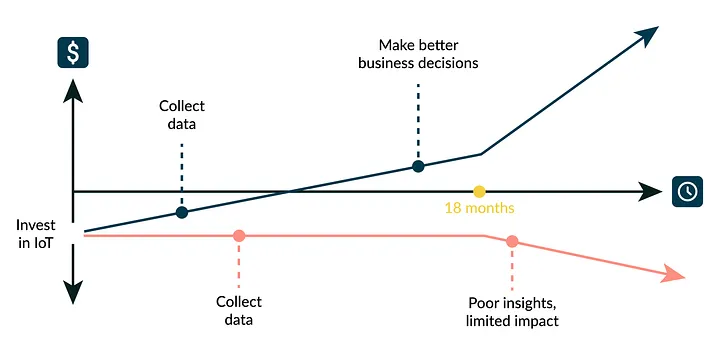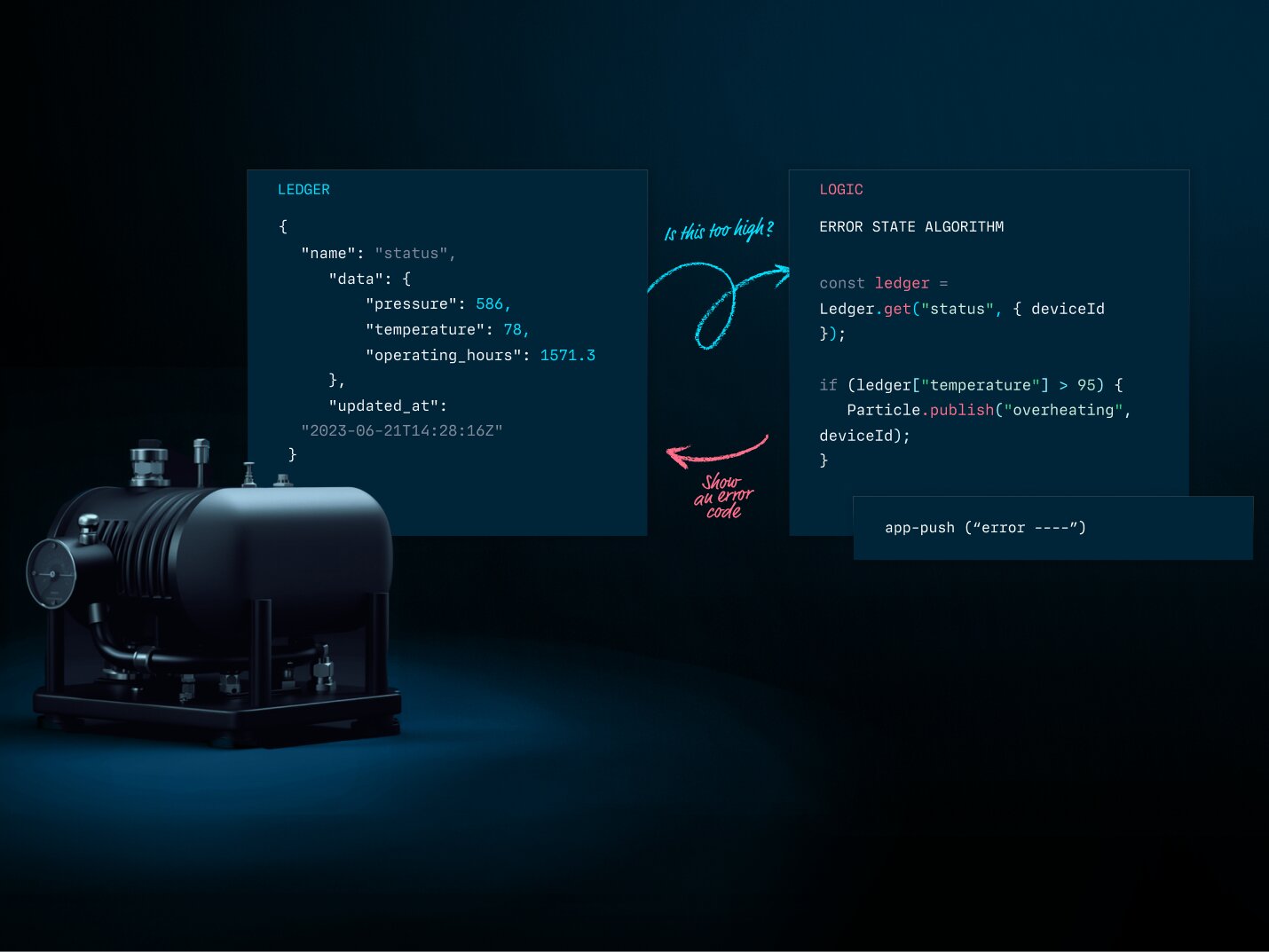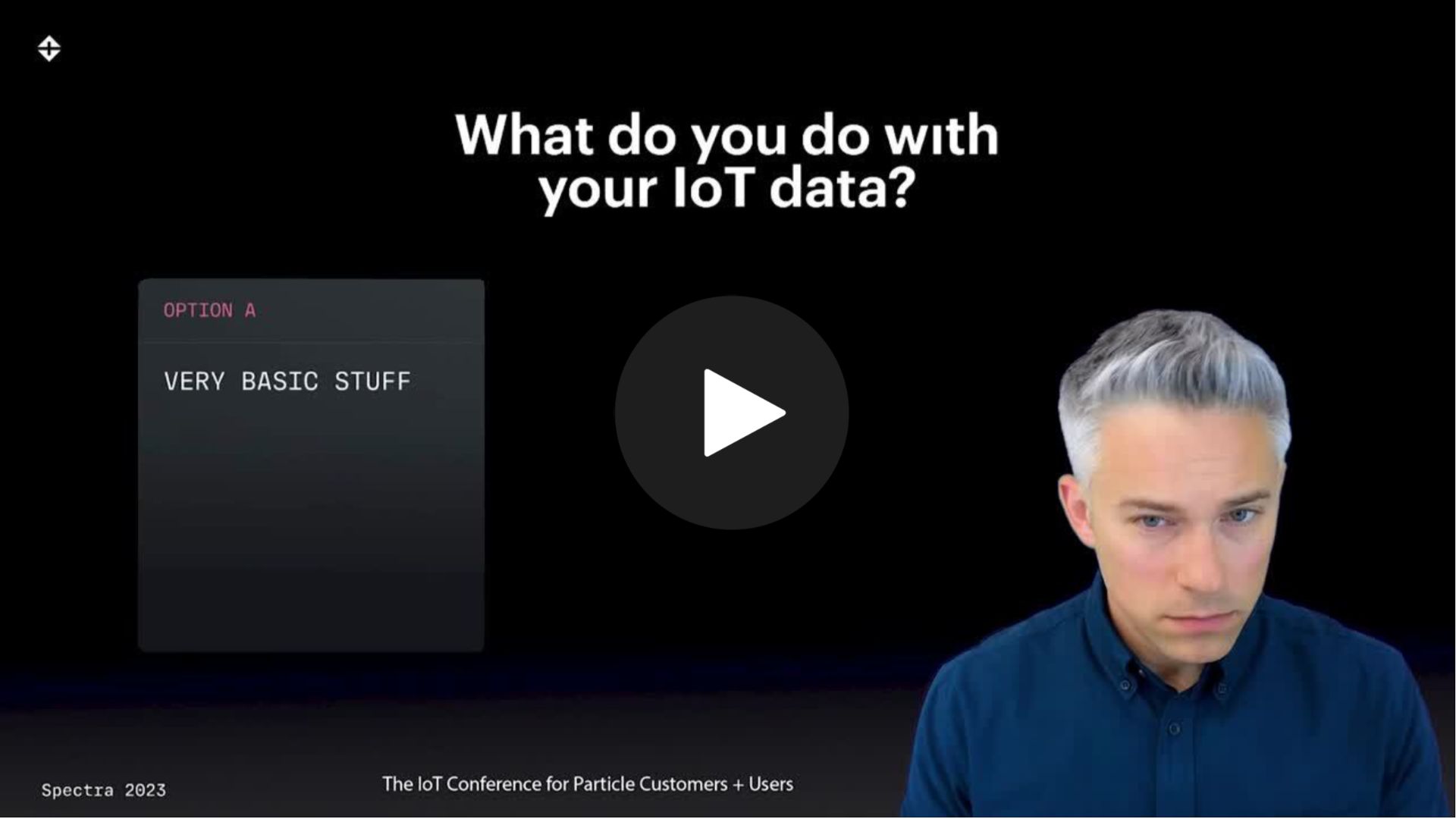Transforming IoT data into business intelligence
Discover strategies for effectively managing IoT data to transform raw data into actionable insights. Plus, explore Particle’s new Logic and Ledger.
Ready to build your IoT product?
Create your Particle account and get access to:
- Discounted IoT devices
- Device management console
- Developer guides and resources
Connected devices generate immense amounts of data every second, presenting businesses with an incredible opportunity to drive innovation and efficiency. Yet, many companies struggle to transform this raw data into actionable insights that can significantly impact their operations. This article addresses the core challenges of IoT data management and outlines effective strategies to unlock the full potential of IoT, turning vast data streams into powerful business intelligence.

Effective data management in IoT
Managing IoT data efficiently is crucial for unlocking its value. Businesses face several challenges, such as organizing data from various sources, ensuring data accuracy, and retrieving relevant information when needed.
Effective data management involves:
- Structured data storage: Cloud-based solutions offer scalable and flexible storage, enabling businesses to handle large volumes of data. Implementing data compression and archiving strategies can significantly reduce storage costs without compromising data accessibility.
- Data integrity: Regular validation and cleaning of data are essential to maintain its accuracy. Automated tools can help identify and correct errors, ensuring that the data remains reliable for analysis.
- Efficient retrieval: Implementing indexing and tagging systems makes it easier to access relevant data quickly. Advanced search algorithms can further streamline the process, allowing businesses to find the information they need without delay.
Turning raw data into actionable insights
Converting raw IoT data into actionable insights involves several steps – a process requiring data to be collected from various sources and then processed and analyzed effectively to generate meaningful insights.

Steps to transform data
- Data collection: Gather data from various sensors and devices. Ensure the data is clean and consistent to avoid issues during the analysis phase.
- Example: A smart factory collects data from temperature sensors, vibration monitors, and production line cameras.
- Data integration: Combine data from different sources for a holistic view. Use data fusion techniques to enhance accuracy.
- Example: Integrate temperature and vibration data to monitor machine health comprehensively.
- Data analysis: Apply machine learning algorithms to identify patterns. Use predictive analytics for forecasting future trends.
- Example: Use machine learning to predict when a machine is likely to fail based on historical data and current sensor readings.
- Actionable insights: Implement dashboards and visualization tools. Generate reports that highlight key findings.
- Example: Create a dashboard that alerts maintenance teams when a machine shows signs of potential failure, enabling proactive maintenance.
Cost-effective data storage solutions
Storing vast amounts of IoT data can be expensive. Companies often end up storing unnecessary data, leading to high storage costs without added value. To address this, businesses should focus on storing only relevant data. Cloud-based storage solutions offer a flexible and cost-effective way to manage IoT data, providing scalable storage options that can grow with the business's needs.
Tips for cost-effective storage
- Tiered storage: Balance cost and performance by using tiered storage solutions. High-priority data can be stored on faster, more expensive storage, while less critical data can be archived on cheaper storage options.
- Data review: Regularly review and delete obsolete data. This practice helps in reducing storage costs and ensures that the stored data remains relevant and useful.
- Optimization: Optimize data compression and deduplication techniques to save space and reduce costs. Efficient data management tools can help achieve significant storage savings.
Leveraging existing infrastructure for data insights
One key advantage of IoT is the ability to leverage existing infrastructure for new insights. By utilizing the sensors and devices already in place, businesses can extract additional value without incurring significant costs.
Real-world examples of leveraging existing infrastructure
- Smart buildings: Use existing temperature sensors to monitor occupancy patterns and optimize heating and cooling systems based on data insights.
- Manufacturing: Analyze data from existing machinery to predict maintenance needs and improve production efficiency by identifying bottlenecks.
Benefits
- Cost savings: Utilizing existing resources maximizes ROI. Businesses can avoid the expense of deploying new sensors and devices while still gaining valuable insights.
- Scalability: Quickly roll out insights across the organization without additional infrastructure. Leveraging existing systems allows for faster implementation and scalability.
Leveraging Particle for optimized IoT data management
Effective IoT data management is essential for transforming raw data into business intelligence. By implementing robust data management strategies, leveraging existing infrastructure, and embracing emerging technologies, businesses can unlock the full potential of their IoT investments. Particle's Logic and Ledger provide comprehensive solutions to these challenges.

Particle Logic: Helps develop and deploy business rules, detect anomalies, and trigger events based on data analysis, turning raw data into actionable insights.
Particle Ledger: Provides a cloud-based key/value store to monitor state changes, aggregate data, and create reliable digital representations of physical devices.
These tools enable cost-effective data storage, leverage existing infrastructure, and prepare businesses for future trends. Explore Particle's Logic and Ledger docs to start transforming your IoT data into actionable business intelligence today.
